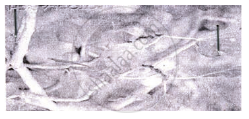Advertisements
Advertisements
प्रश्न
Answer the following question:
Substantiate with the help of one example that in an ecosystem mutualists
(i) tend to co-evolve and
(ii) are also one of the major causes of biodiversity loss.
उत्तर
Mutualists are pairs of the organism that benefit from the interactions between them.
(i) Mutualism between a flower and its pollinator follows co-evolution as the interaction should be safe from "cheating".
A Fig species is pollinated by a particular species of wasp. While the wasp uses the fruit for oviposition and source of nourishment for its larvae, the fig is pollinated by the wasp.
(ii) Since both the participants in the mutualism are linked, a change, anthropogenic or otherwise, affecting one species will consequently also reduce the population of the other species.
Plant-Pollinator interaction is an example of the same. Extinction of the pollinator will reduce the diversity of plant species which is dependent on it. Reduction in the bees population is posing a threat to the diversity of crops.
संबंधित प्रश्न
Answer the following question.
Suggest two practices giving one example of each that help protects rare or threatened species.
Species that possess a high risk of extinction with very few surviving members (50) are categorised as ____________ by the IUCN.
'The Evil Quartet' is a concept which describes the ______.
Threatened species are those which ______.
What is common to lantana Eichhomia and African catfish?
What is common to the species shown in figures A and B?
 |
 |
| A | B |
List any two major causes other than anthropogenic causes of the loss of biodiversity.
"Forests provide intangible benefits to us." Explain by taking three different areas, how.
When a species goes extinct in one area, it is often desirable to re-introduce the species from other populations. A major problem with this approach is that ______.
Give definitions of Invasive species.
